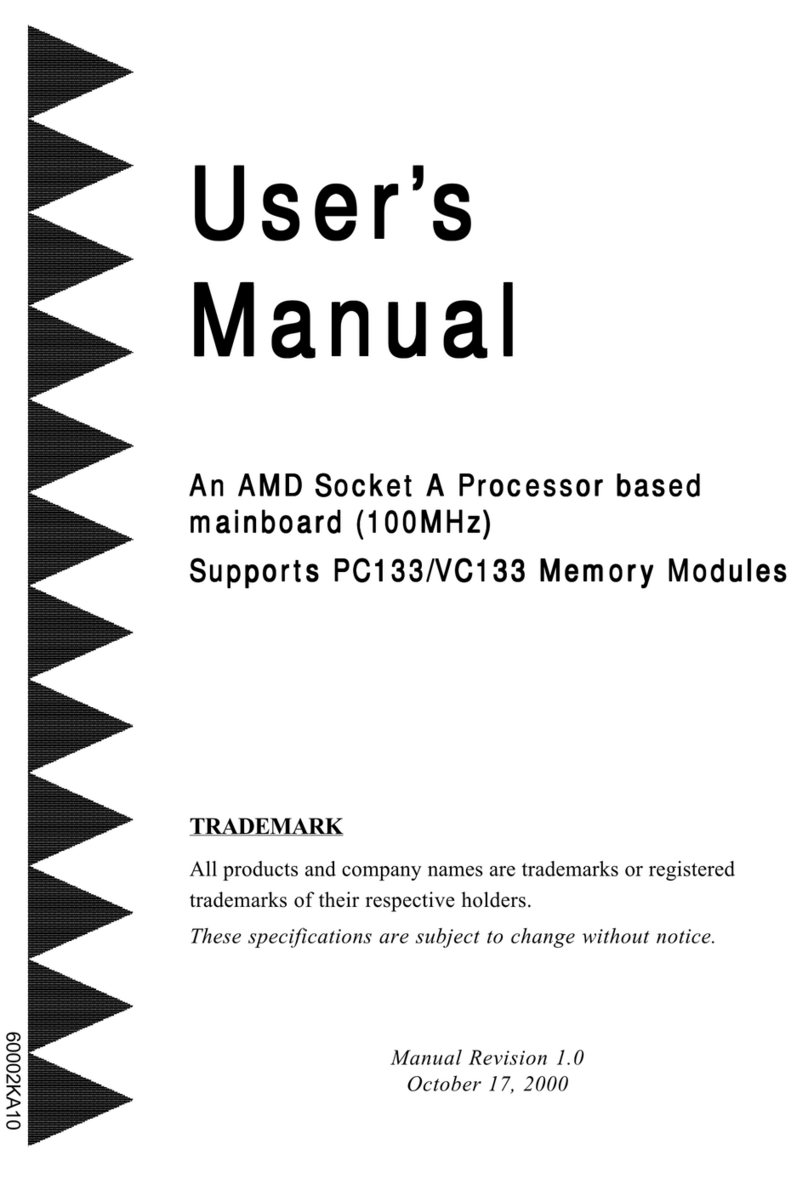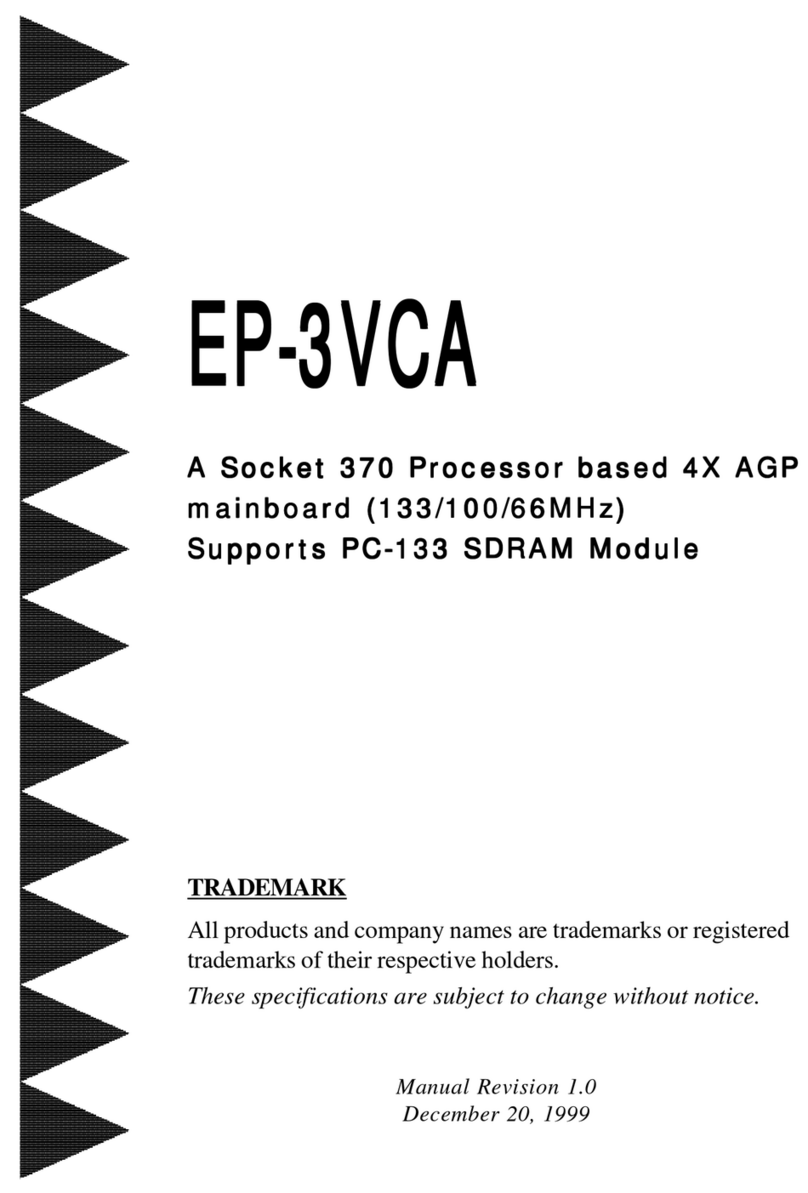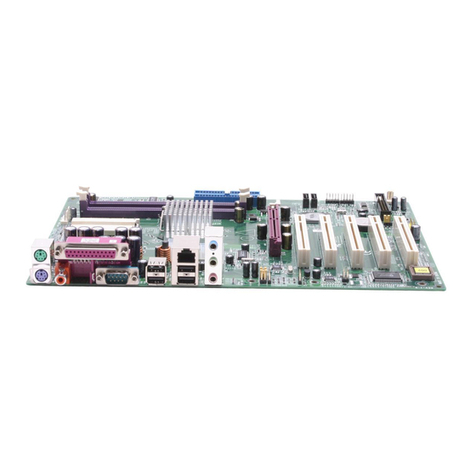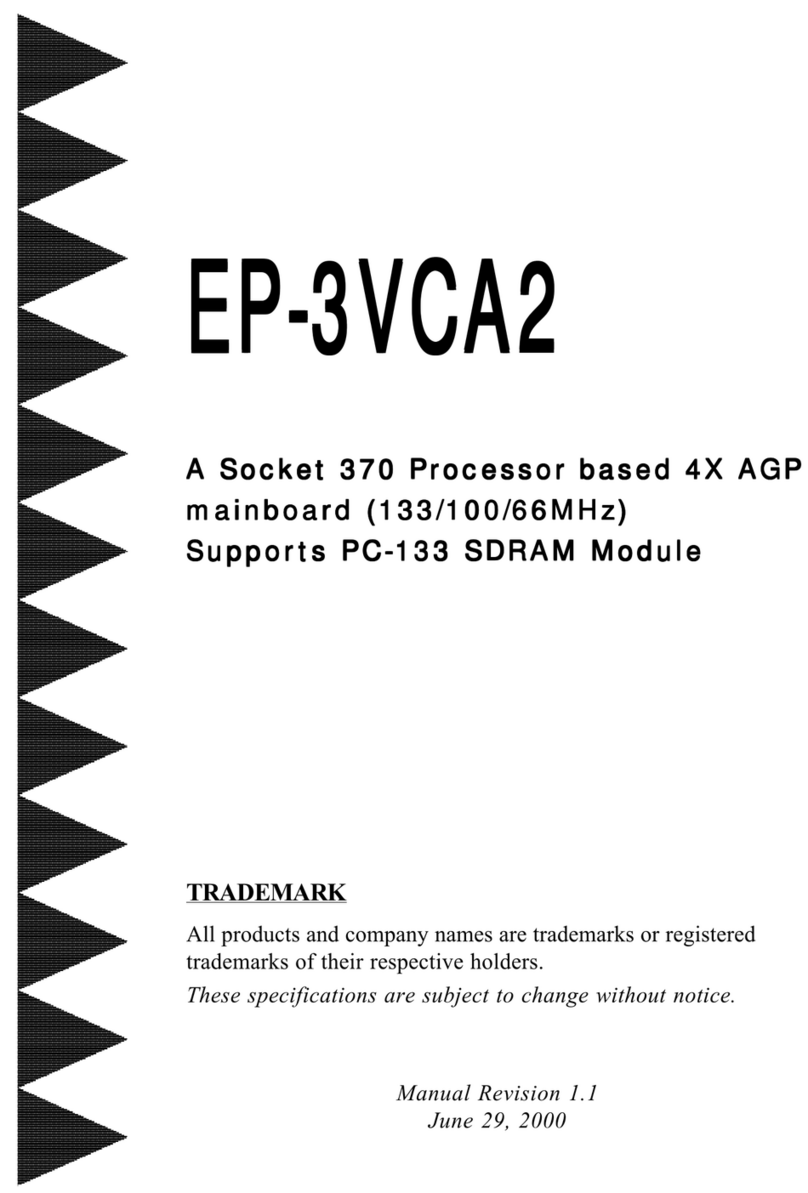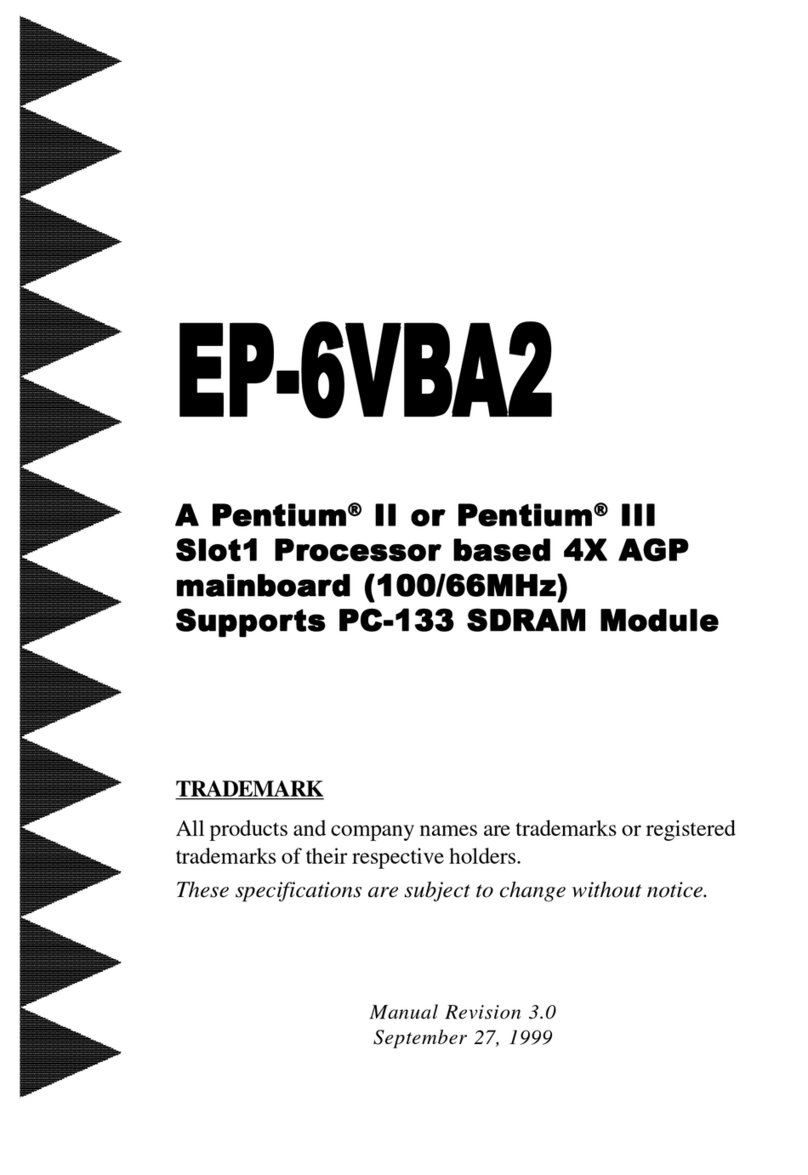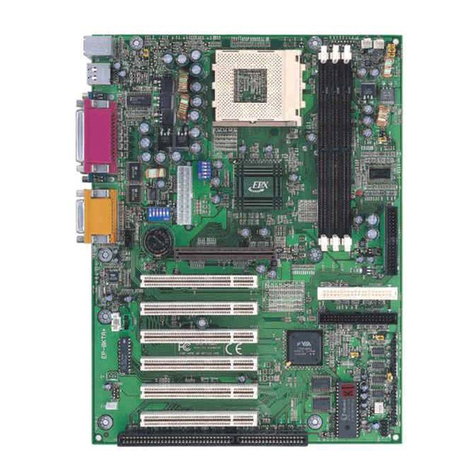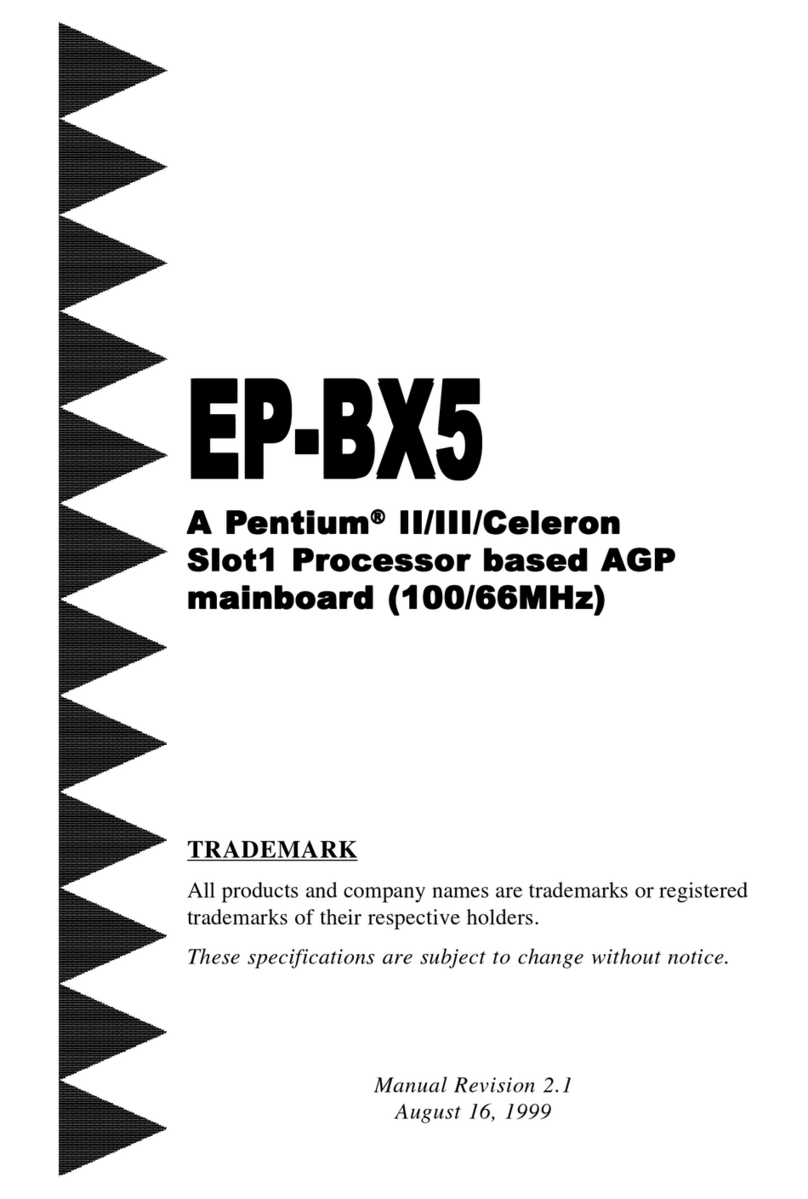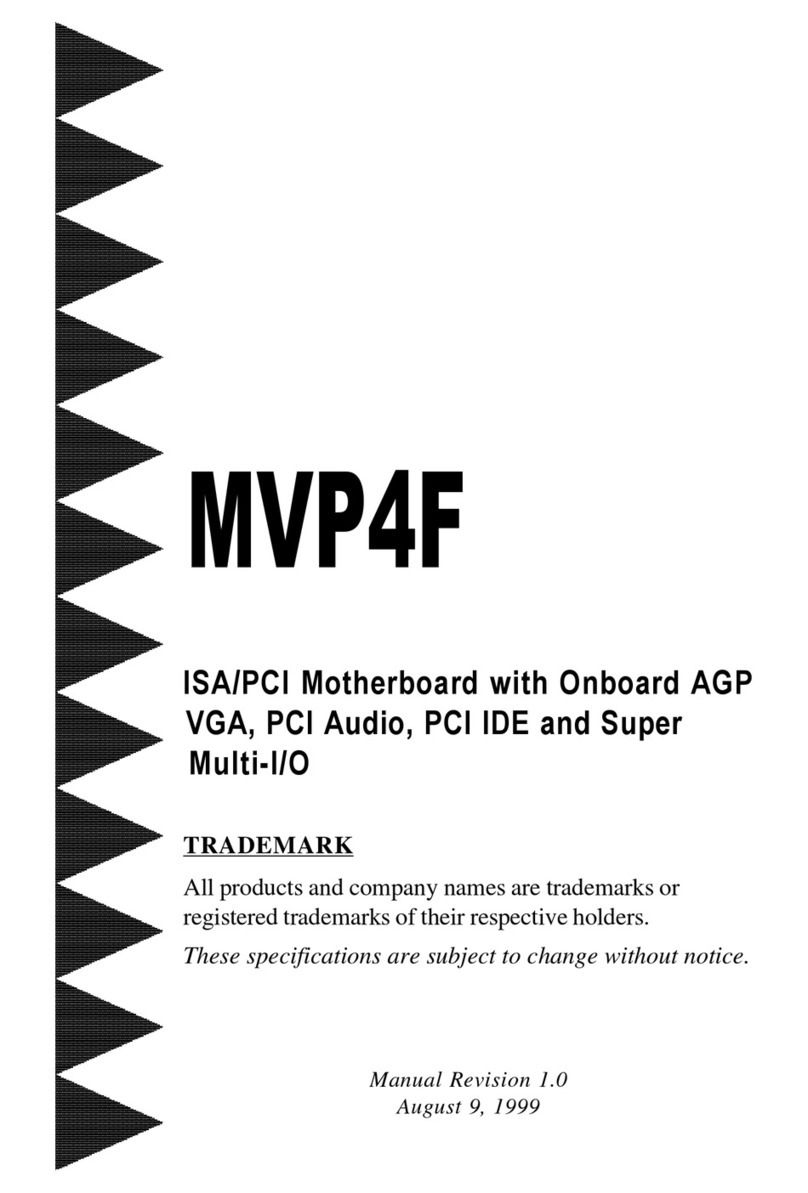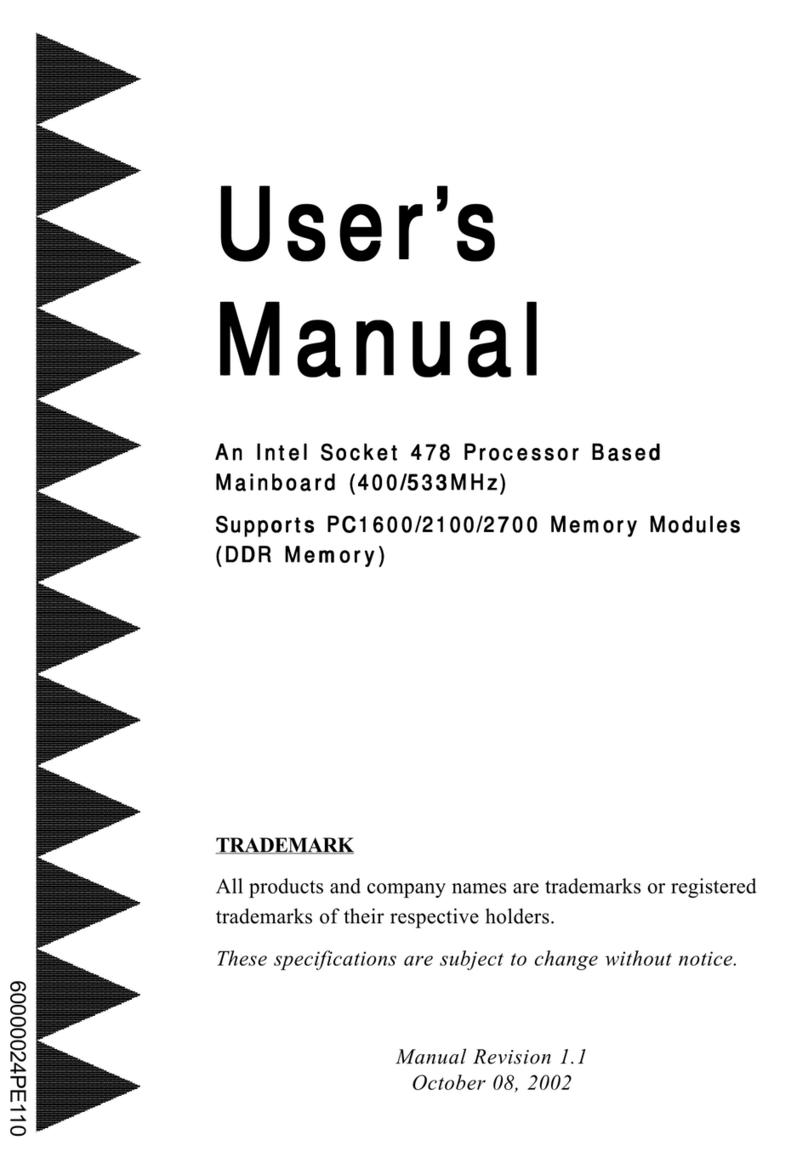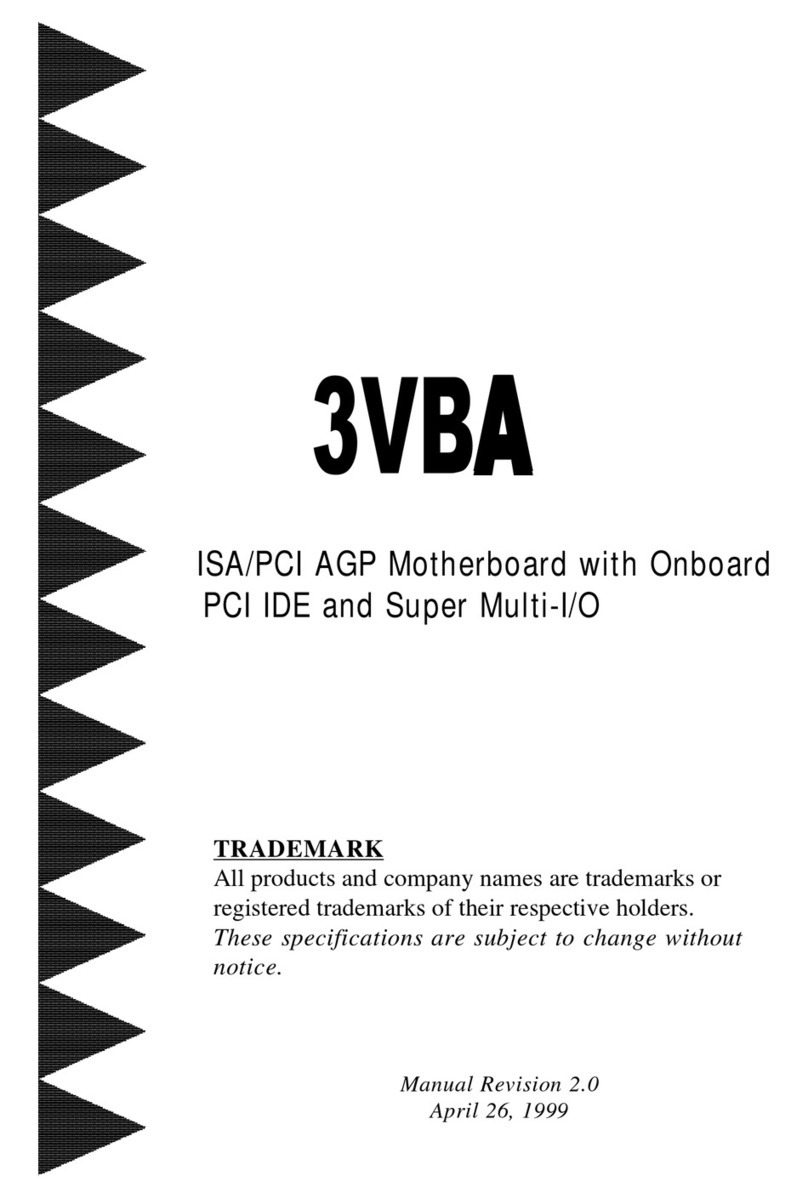FeaturesBXA-M
Page 1
FEATURES
BXA-M Features:
•BXA-M is based on the Pentium®II or Deschutes Processor operating
at 233 ~ 333MHz (66MHz) or 300 ~ 450MHz (100MHz) on Slot 1. The
board is configured by an Easy-Setting-Single-Jumper (E.S.S.J.) to match
your CPU clock speed.
•Designed with VIA APOLLO PRO 692/596 AGPset.
•Supports up to 768 Mega of DRAM (minimum of 16 MB) on board, You can
use 168-pin DIMM x 3. It will automatically detect Extended Data Output
(EDO) DRAM at 66MHz only or Synchronous DRAM memory (SDRAM)
at 66MHz or 100MHz (please see Section 3-2).
•BXA-M will support Error Checking and Correcting (ECC) when using
paritys DRAM memory modules. This will detect multiple bit errors and
correct 1-bit memory errors.
•Supports (3) 16 bit ISA slots, (4) 32 bit PCI slots, (1) AGP slot and provides
(2) independent high performance PCI IDE interfaces capable of supporting
PIO Mode 3/4 and Ultra DMA 33 devices. The BXA-M supports (4)
PCI Bus Master slots and a jumperless PCI INT# control scheme which
reduces configuration confusion when plugging in PCI card(s).
•Supports ATAPI (e.g. CD-ROM) devices on both Primary and Secondary IDE
interfaces.
•Designed with Winbond W83977TF Multi I/O: (1) floppy port, (1) parallel port
(EPP, ECP), and (2) serial ports (16550 Fast UART).
Note: Japanese “Floppy 3 mode” is also supported
•Includes a PS/2 mouse connector.
•Allows use of a PS/2 keyboard.
•Features Award Plug & Play BIOS. With Flash Memory you can always
upgrade to the current BIOS as they are released. (http://www.2themax.com
please visit our Technical Support section for the latest updates)

